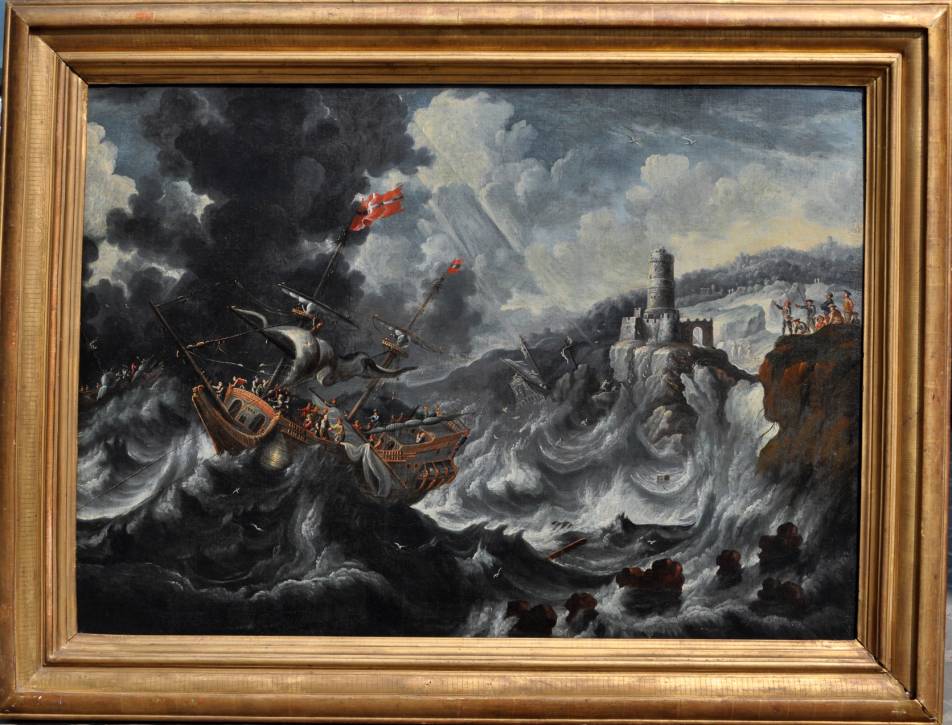A coastal landscape with ships caught in a storm
Oil on canvas : 84,1 X 116,8 cm
Unsigned
Frame : 106 X 138 cm
"All paintings are fully documented with texts and photographs of comparative items. All this information is removed from our website once the painting is sold".
SOLD

In short
Mahu was a skilled painter who practised different genres. He was influenced by some of the best Flemish and Dutch contemporary painters of seascapes, still lifes and genre scenes.
It must have been very gratifying for our twenty year old painter to marry into a Flemish family of art dealers. That permitted him to have also access to Dutch painting at a time when Holland was still fighting the Spanish oppressor for independence (until 1648).
Our painter was clearly influenced by the well-known Dutch tavern scene specialists from Haarlem.
About Cornelis Mahu
Flemish painter
Antwerp 1613 – 1689 Antwerp
Mahu became a Master in the Antwerp Guild of Saint Luke in the year 1638/39.
Although a Flemish painter some of his paintings look very Dutch. The reason is simple. In 1633 Mahu married Brigitta Wolfvoet. Her father, Victor Woflvoet I (who had possibly been Mahu’s master), and her brother, Victor II, were active at the same time as painters and as art dealers; they sold a lot of Dutch paintings. Cornelis Mahu must have learned Dutch painting through them; some old scholars erroneously thought he might have been a pupil of the Dutch painter Willem Claesz. Heda, for in his early years Mahu regularly copied still lifes by this famous master.
Cornelis Mahu was a very versatile painter. He painted
- seascapes influenced by the Flemish painters Bonaventura I and Jan I Peeters some also by the Dutch painter Jan Porcellis.
- still lifes, some very Dutch, Protestant “ontbijtjes” influenced by Willem Claesz. and Gerrit Willemsz. Heda, but also Flemish still lifes reminding of Jan Pauwel Gillemans I.
- genre scenes, inspired by the Flemish painter David Teniers II (or by the Dutch painter Adriaen van Ostade. Cornelis’ son, Victor (circa 1665 – 1700/01), continued painting genre scenes in his father’s footsteps.
Besides his son Victor he had three pupils, the best known one was the flower still life painter Gaspar Peeter Verbruggen I (1635 – 1681).
About our painting
Our painting is clearly influenced by the well-known Dutch tavern scene specialists from Haarlem: by the brothers Adriaen (1610 – 1685) and Isaac van Ostade (1621 – 1649), and by Bartholomeus Molenaer (circa 1618 – 1650).
Simple peasants are enjoying a visit at a tavern. Despite the poverty and coarseness of their lives these farmers were depicted with tender poetry. The implications of their tempestuous lives, of the vices of the underclass (here not shown) stood as a source of delight and as a moral warning and instruction for the inhabitants of the towns, the public who would buy these delightful paintings.
Why should you buy this painting?
Because there is a lot of noble tenderness and clarity in the depiction of this barn-like tavern interior where simple peasants are enjoying their spare time.
